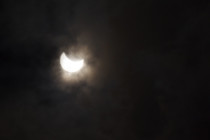In a multitude of applications, such as home decorating or the art of selfie portraiture, the right light can make all the difference. But who would have thought that the right light could be the answer to effective pest control?
A team of researchers from Tohoku University has found that specific frequencies of blue LED light can be used as an effective, safe, and affordable way to kill insects. The research, conducted by Masatoshi Hori, Kazuki Shibuya, Mitsunari Sato and Yoshino Saito and published in the journal Scientific Reports, examined the effects of different wavelengths of blue light on different inspect species.
The study is unique in that it specifically focuses on the biological effects of visible light on insects, rather than shortwave, ultraviolet light. A greater understanding of the impact of certain spectrums is helpful for identifying novel uses for visible light, such as a replacement for traditional chemical pesticides.
To this end, the team chose three different types of pesticide-relevant insects, including: Drosophilia melanogaster, which is a type of fruit fly; Culex pipiens molestus, which is a variety of mosquito; and a flour beetle known as Tribolium confusum. They selected insect species for their study with particular qualities in mind.
For example, the team felt that mosquitos were of interest because they are known to transmit serious diseases such as malaria, dengue fever, yellow fever, West Nile fever, and Japanese encephalitis. C. pipiens molestus mosquitos multiply quickly, making them ideal for experiments. The flour beetle, T. confusum, is a pest that, as its name suggests, lives in stored grain products. D. melanogaster and C. pipiensmolestus belong to the order Diptera, whereas T. confusum belongs to Coleoptera. This distinction was important as the researchers wanted to study whether or not the effects of blue-light irradiation were different across multiple insect orders. The fruit fly, D. melanogaster, has a short life cycle that makes it easy to study the lifespan effects of blue-light irradiation.
Interestingly, results found that toxic wavelengths of visible light are species-specific in insects. In other words, each species reacted differently to different wavelengths. For example, the two most lethal doses of light for D. melanogaster were 440 and 467 nm. More than 90% and 70% of pupae died after irradiation with wavelengths of 467 and 440 nm, respectively.
For those pesky C. pipiens molestus mosquitos, the research team found that their tolerance to blue light irradiation was higher than that of D. melanogaster pupae, with a peak lethal wavelength of 417 nm. They also found that even if irradiated eggs survived the blue light blast and hatched, most hatchlings succumbed soon thereafter.
And lastly, the flour beetle, T. confusum was no match for blue light wavelengths ranging from 404 to 467 nm, which confirmed that blue-light irradiation can kill insects of various orders.
In their report discussion, the researchers suggest that irradiation of water sources containing mosquito eggs, larvae, and pupae, could potentially help prevent outbreaks of mosquito-borne diseases. Blue-light irradiation may also be useful for agricultural pest control in food storage and sanitation.
The team used LED lighting units that could manipulate wavelength, colour and tone, making it easy to adjust to compare different wavelengths. In addition, LED is energy efficient which helps makes it a green and cost-effective bug-zapping machine.
Additional research in the area is necessary to determine optimal levels of blue-light irradiation and refine techniques for real-world application. As the research team points out in their summary, because effective wavelengths are species-specific, several wavelengths, or broad-spectrum blue light, are needed for simultaneous control of multiple species. The team also predicts that future study may want to examine genetic variance in insect resistance to blue-light irradiation, as this is something that has been previously observed in ultraviolet irradiation.
Traditional techniques in pest management are less than ideal with extensive evidence mounting of the harmful effects toxic chemical pesticides have on on our air, water and food sources. While more study is necessary, blue LED might hold the key to better options for controlling crop-destroying and disease-carrying pests.
About The Author

-
Serial Entrepreneur, Technologist and Inventor.
My objective is to develop useful products that have a net positive effect in the lives of those that use them and the environment that we live in.
CEO of Mission LED Lighting Company Ltd.
- 2017.05.24LED factsWhy Are Cars Switching to LEDs if They’re Too Bright?
- 2017.05.09Be green & saveHow to Easily Replace T8 Fluorescent Tubes With LED
- 2017.03.07Build a better future7 Things About Explosion Proof LED Lighting You Should Know
- 2017.02.28Be green & saveWhy We Love LED Grow Lights (And You Should, Too!)





Logan
Thank you for the well-explained information. It’s really helpful that there are articles like this to help how we handle the pests and also there’s also pest control company/ Keep sharing
Reply